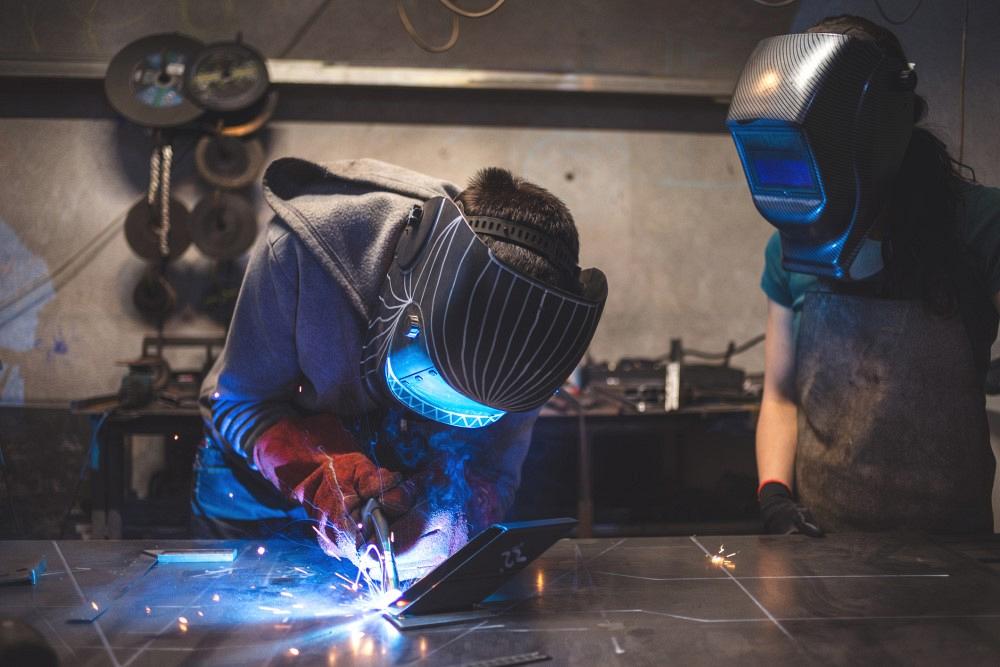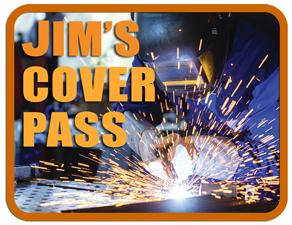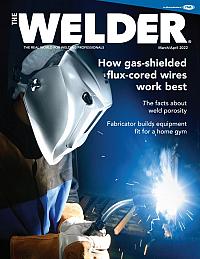Senior Company Trainer
- FMA
- The Fabricator
- FABTECH
- Canadian Metalworking
Categories
- Additive Manufacturing
- Aluminum Welding
- Arc Welding
- Assembly and Joining
- Automation and Robotics
- Bending and Forming
- Consumables
- Cutting and Weld Prep
- Electric Vehicles
- En Español
- Finishing
- Hydroforming
- Laser Cutting
- Laser Welding
- Machining
- Manufacturing Software
- Materials Handling
- Metals/Materials
- Oxyfuel Cutting
- Plasma Cutting
- Power Tools
- Punching and Other Holemaking
- Roll Forming
- Safety
- Sawing
- Shearing
- Shop Management
- Testing and Measuring
- Tube and Pipe Fabrication
- Tube and Pipe Production
- Waterjet Cutting
Industry Directory
Webcasts
Podcasts
FAB 40
Advertise
Subscribe
Account Login
Search
Jim’s Cover Pass: 7 guidelines for becoming a good welder
The best way to become a better welder is to be consistent with basics
- By Jim Mosman, AWS, CWI/CWE
- Updated October 20, 2023
- April 13, 2022
- Article
- Arc Welding
Q: I have been teaching welding for a couple years now, and one of the questions my students always ask is for me to show them some tricks of the trade. What are your feelings about this?
Tips to Being a Good Welder
A: This is the time when you can tell them that once they learn the trade, they’ll be able to understand the tricks of the trade. The basic principles of how to weld and why certain things are done really have not changed in the 48 years I have been in this business. Here are seven guidelines that will help new welders become good welders:
- Always use the proper PPE. In addition, be aware of your workspace and surrounding area. Your personal health and safety, as well as the health and safety of those around you, must be a priority at all times.
- Know what material you are welding. This is an important step that leads to choosing the best process, electrode, and amperage for the type and thickness of the base material. Check manufacturer recommendations for equipment and electrodes as needed, and follow the welding procedure specification (WPS) if available.
- Be comfortable. Find the position that allows you to complete the weld comfortably, while also being able to see the weld puddle and joint from start to finish.
- Prep your material. Spend the time to clean the material before you weld. Also, make sure your component is tack welded appropriately and has proper fit-up, which will make the weld easier to complete.
- Maintain the correct electrode position. Depending on the process, this may be the electrode holder, gun, or torch. Maintaining the proper arc length, work and travel angles, and travel speed is important for the placement and shape of the weld puddle. This is the one area that requires complete attention to detail and determines the final appearance of the completed weld.
- Make each weld better than the last. Clean and visually inspect every bead before making the next one. If there are any problems or defects, stop and fix them before continuing.
- Never stop learning. This is the point where you ask questions, watch others, study the processes, and maybe pick up some of those tricks of the trade.
About the Author

Jim Mosman, AWS, CWI/CWE
Lincoln Electric Education Division
About the Publication
Related Companies
subscribe now

The Welder, formerly known as Practical Welding Today, is a showcase of the real people who make the products we use and work with every day. This magazine has served the welding community in North America well for more than 20 years.
start your free subscription- Stay connected from anywhere

Easily access valuable industry resources now with full access to the digital edition of The Fabricator.

Easily access valuable industry resources now with full access to the digital edition of The Welder.

Easily access valuable industry resources now with full access to the digital edition of The Tube and Pipe Journal.
- Podcasting
- Podcast:
- The Fabricator Podcast
- Published:
- 04/16/2024
- Running Time:
- 63:29
In this episode of The Fabricator Podcast, Caleb Chamberlain, co-founder and CEO of OSH Cut, discusses his company’s...
- Trending Articles
Sheffield Forgemasters makes global leap in welding technology

Welding student from Utah to represent the U.S. at WorldSkills 2024

Lincoln Electric announces executive appointments

Lincoln Electric acquires RedViking

Engine-driven welding machines include integrated air compressors

- Industry Events
16th Annual Safety Conference
- April 30 - May 1, 2024
- Elgin,
Pipe and Tube Conference
- May 21 - 22, 2024
- Omaha, NE
World-Class Roll Forming Workshop
- June 5 - 6, 2024
- Louisville, KY
Advanced Laser Application Workshop
- June 25 - 27, 2024
- Novi, MI




























